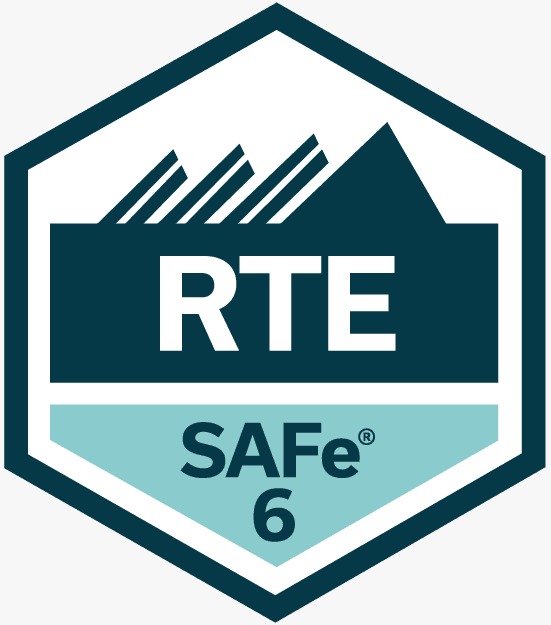SAFe Release Train Engineer_ RTE_ 6.0

Agile & Digital Innovation Training
3 days
Course description
During this advanced three-day course, you will gain an in-depth understanding of the role and responsibilities of a Release Train Engineer (RTE) in the SAFe enterprise. Through experiential learning, you will examine the RTE role in a Lean- Agile transformation. You will learn how to facilitate ART processes and execution, coach leaders, teams, and Scrum Masters in new processes and mindsets. You will also learn how to prepare, plan, and execute a Planning Interval (PI) planning event, the primary enabler of alignment throughout all levels of a SAFe organization.
Target audience
• RTEs and Solution Train Engineers (STEs)
• Program and project managers
• Scrum Masters
• Leaders and managers
• Agile coaches
• SAFe Program Consultants (SPCs)
Course requirements
These skills and knowledge are highly recommended in order to be successful in passing the RTE exam:
• SAFe certification
• Cross-team communication skills
• Full use of SAFe principles in action
• Coaching Agile and SAFe facilitation and leading by example
• Launch or participate in at least one ART and one PI
• Working knowledge of team dynamics
What you get
Class registration includes:
• Attendee workbook
• Preparation and eligibility to take the SAFe® Release Train Engineer (RTE) 6.0 exam
• One–year membership to SAFe Studio
• Course certificate of completion Attendees must attend all three days of the course in order to qualify for the exam.
What you will learn
To perform the role of a SAFe® Release Train Engineer (RTE), you should be able to:
• Apply Lean-Agile knowledge and tools to execute and release value
• Assist with program and large solution execution
• Foster relentless improvement
• Build a high-performing ART by becoming a servant leader and coach
• Develop an action plan to continue your learning journey
Course teachers
Course Plan
| Section 01 Exploring the RTE Role and Responsibilities | |
| Section 02 Applying SAFe Principles | |
| Section 03 Organizing the ART | |
| Section 04 Executing a Planning Interval | |
| Section 05 Fostering Relentless Improvement | |
| Section 06 Serving the ART | |
| Section 07 Continuing Your Learning Journey |